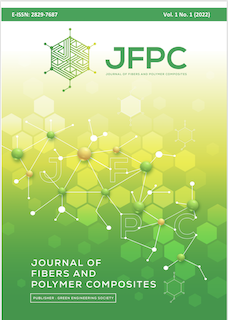Sugar Palm Lignocellulosic Fiber Reinforced Polymer Composite: a Review
##plugins.themes.academic_pro.article.main##
Abstract
Abstract. The increasing depletion of petroleum resources, as well as increased awareness of global environmental problems linked with the usage of petroleum-based plastics, are the key driving factors for the widespread acceptance of natural fibres and biopolymers composites. Sugar palm fibre (Arenga pinnata Wurmb. Merr) is one of Malaysia's most abundant and renewable fibres. The purpose of this paper is to explore the development of a sugar palm lignocellulosic fibre reinforced polymer composite. SPF is mostly composed of cellulose (43.88 %), which results in good mechanical properties. According to the review of literature, no comprehensive review article on sugar palm lignocellulosic fibre reinforced polymer composite has been published. The current investigation is focused on the mechanical, thermal, and morphological aspects of SPFs and polymers. The research also demonstrates the potential of SPF polymer hybrid composites for industrial applications such as automotive, household goods, packaging, bioenergy, and others.
##plugins.themes.academic_pro.article.details##

This work is licensed under a Creative Commons Attribution-NonCommercial-ShareAlike 4.0 International License.

